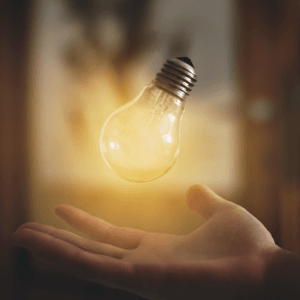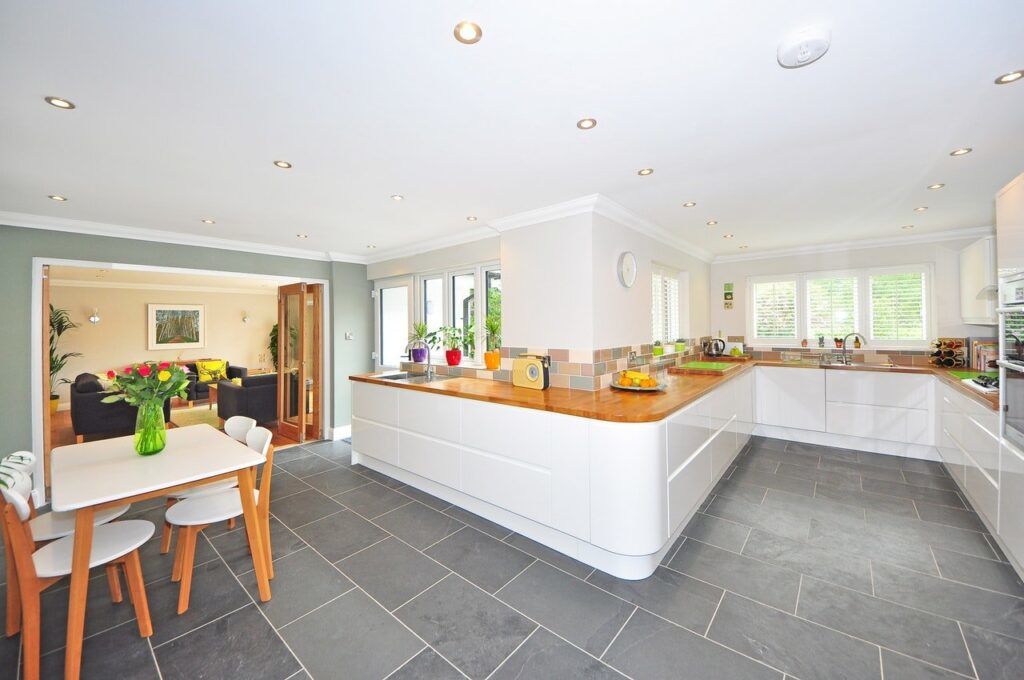Two of the primary reasons people choose to build a modular home is the pricing and the ability to customize the build to suit their needs. Almost every aspect of your new modular home can be tailored to you including a custom lighting plan.
Have you ever been frustrated with the lack of overhead lighting?
Would you like more light over a desk?
Want to set the mood for date-night with the spouse?
How to Create a Custom Lighting Plan
“You cannot see without light.”
“Your eyes are drawn to the brightest light.”
“See the effect, not the source.”
These obvious truths were shared with us by Martha Carlson, Lighting Consultant. Martha has designed custom lighting plans for homeowners and businesses for over 35 years. Her insight will help you better understand the role lighting plays in your new home and how you can put together a custom lighting plan for your new modular home.
Step #1
The first step in developing a custom lighting plan is to determine the wants and needs of each room in your home.
- How will you use the room? What is its purpose?
- Where will the furniture sit?
- Do you have decorative items you wish to showcase?
Once you have a basic understanding of each room’s purpose, then you can select from three types of lighting techniques and determine their placement.
General or Ambient Lighting
This is the first light you turn on in a room and it gives overall illumination. The light switch is usually the first one inside the door you enter. All rooms need a general light source that has a dimmer at the switch. It allows full light for safety and cleaning or lowers the light level for mood and less glare.
Accent Lighting
Accent lighting highlights, adds interest, and creates drama using a brighter concentrated light focused on an object. You select an item (not several) you want to draw attention to and focus your light source there. In essence, you are actually creating a picture with this lighting technique. Accent lighting is achieved by using recessed cans with direction trims, track lighting, or wall mounted light fixtures.
Task Lighting
Fixtures that add concentrated light to help perform certain activities like reading, cooking, or paying bills are referred to as task lighting. These lights need to be bright enough to prevent eye strain and can be achieved by recessed cans, table and floor lamps, under counter lights, and track lighting.
Types of Lighting Fixtures
There are several types of lighting fixtures to choose from.
- Recessed Cans
- Chandeliers
- Pendant Lights
- Ceiling Mounts
- Track Lighting
- Wall Sconces
- Under Cabinet Lights
- Portable Table and Foor Lamps
Most homes contain a combination of these.
Recessed Cans
Recessed cans are a good source to illuminate a room and not obstruct the view. When someone enters a room you want the decor and the room to stand out without unwanted hot spots of light or other objects blocking the light. On a flat ceiling, you can use a regular can and trim that allows the bulb to recess inside. This the “see the effect, not the source” application. If your bulb is at ceiling level or below, this causes a hot spot that draws your vision upward instead of seeing the room first.
The builders trim is the least expensive but does not allow all of the bulbs to recess into the can. A better choice is the ridged baffle trim that comes in black for less glare or white for more light output. The white can be painted to match the ceiling.
On a sloped ceiling you will want to use a sloped ceiling can. The socket is adjustable and can be turned down to shine light toward the floor. Otherwise, without this adjustable socket, the light would shoot across the room into someone else’s eyes and not light the room correctly.
Think about trying to recreate natural lighting that shines down like the sun, moon, and stars.
Ratings on Recessed Cans
You may find the can ratings somewhat confusing when you start to shop.
- IC – This means it has an extra wall around it so insulation can touch or cover it. This is used in new construction.
- TC – This has no extra wall covering and all insulation must be at least 3 inches from the can. This is used in new construction and remodel jobs.
The cans and trims determine the bulb type and wattage that can be used safely. Do not exceed the recommendations on the inside of the can. You might allow the maximum wattage when determining your wiring and amperage (electric current) so you can use dimmers and have more lighting control options.
 Types of Light Bulbs
Types of Light Bulbs
Different bulbs are used for different applications.
- Incandescent (older style, hard to find)
- Fluorescent
- Halogen
- Low-voltage
- High-intensity Discharge
- LED
The most common type used in homes today is the halogen bulb.
Halogen Bulbs
Halogen bulbs shine brighter than incandescents and are a great bulb when using dimmers. They also render color correctly so that your decor colors look true and not drab. Halogen bulbs produce a warmer light than a fluorescent and can throw lumens further and are more intense. Halogen bulbs have longer life-hours than an incandescent bulb.
Low-voltage Bulbs
Low voltage (12-volt) uses less wattage; with excellent beam control and great color intensity. They can be warm like the halogen and generate interest in a room.
Fluorescent Light Bulbs
Fluorescents have a much longer life and are cool to the touch. They throw light around a room but they are not an attention getter nor can they throw light directly at an object or the floor. Use a good color-rendering fluorescent bulb such as a 3500K or a 3000K. Fluorescent bulbs are often used in laundry rooms as well as a general room lighting source. Using a color-corrected bulb will help you see colors in their true light.
LED bulbs (Lighting Emitting Diode)
These bubs came into use when incandescent bulbs were banned for import or manufacture in the United States. They can more expensive to purchase up front but have the longest life over other bulbs. LED bulbs don’t just burn out but rather, they get dimmer over time. They are cooler than incandescents. Their color renderings are also improving. LED bulbs are dimmable but you must use a dimmer suitable for LED bulbs.
Constant testing and research is being done to improve LED bulbs. Some research indicates that some of the light wavelengths may or may not be damaging to the eyes over time. This situation bears continued monitoring, but for now, an LED bulb makes a good solution for replacing older incandescent bulbs.
LED is more efficient at directing light to an object and less efficient at lighting in all directions like a fluorescent.
High-Intensity Discharge Bulbs
You find high-intensity discharge used in street lights, gymnasiums, and a lot of commercial applications. Homeowners sometimes use this type of bulb for outdoor security lighting.
The second step in building a custom lighting plan is to visit your lighting showroom.
Once you have a general idea of how you would like the lighting to work for each room of your home, it’s time to go shopping. Take your modular home floorplan along with your list of lighting needs to your local lighting showroom. They can help you select the type of fixtures that will work best in your new modular home. For complicated plans, they should have someone that can help you lay out a lighting diagram for your electrician.
When you place your order for your new modular home, tell your modular home builder you plan to use a custom lighting plan. They will build the segments without lighting (and remove it from the price of building the home). Once your builder sets the home on the building site, an electrician can come in and install your fixtures according to the custom lighting plan.


